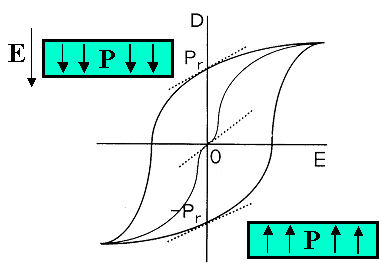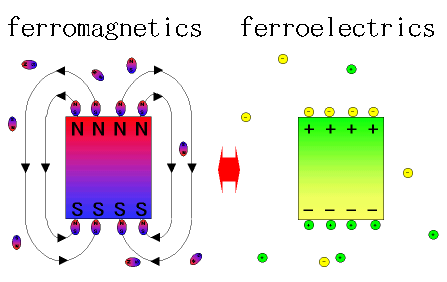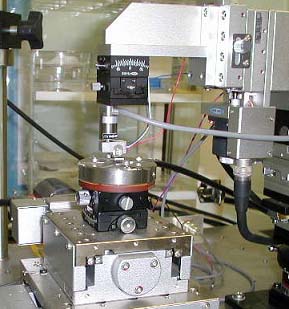
SNDM is based on a technique for observing polarization distributions of ferroelectric materials and a local crystal anisotropy.
Ferroelectric material has polarizations just like ferromagnetic, as shown in Fig. 1. Polarities of ferromagnetics are N and S, while those of ferroelectrics are plus and minus. Polarization of ferroelectric material can be inverted by applying a high external electric field.

Very small part of ferroelectric substrate can be inverted using AFM probes. Recently, studies for estimating minimum area as artificial polarization inversion are conducted intensively in our laboratory. These research results will be utilized for high density strage system and communication devices.
Polarization distributions in these ferroelectric materials can be observed with SNDM.
As N and S poles always make a pair, magnetic field leaks out from the ferromagnetic specimen, and we can measure it with ease. In the case of ferroelectric materials, however, plus or minus charges exist separately, because the surface of the specimen is shielded by the charges of atmosphere, and electric field doesn't leak out.
Therefore, generally it is so difficult to measure polarization distributions of ferroelectric materials with a simple electrical method, and a certain contrivance is needed.

So SNDM is required for ferroelectrics studies.
SNDM realizes a high resolution observation concerning polarization distributions, even if the surface is shielded by electric charges.

A probe and a stage of SNDM are shown in Fig. 3. This equipment can easily map the polarization distributions of ferroelectric materials two-dimensionally; moreover, its resolution is subnanometer order.
In fact, this is an amazing technology!
Details are shown in "Principle of SNDM".